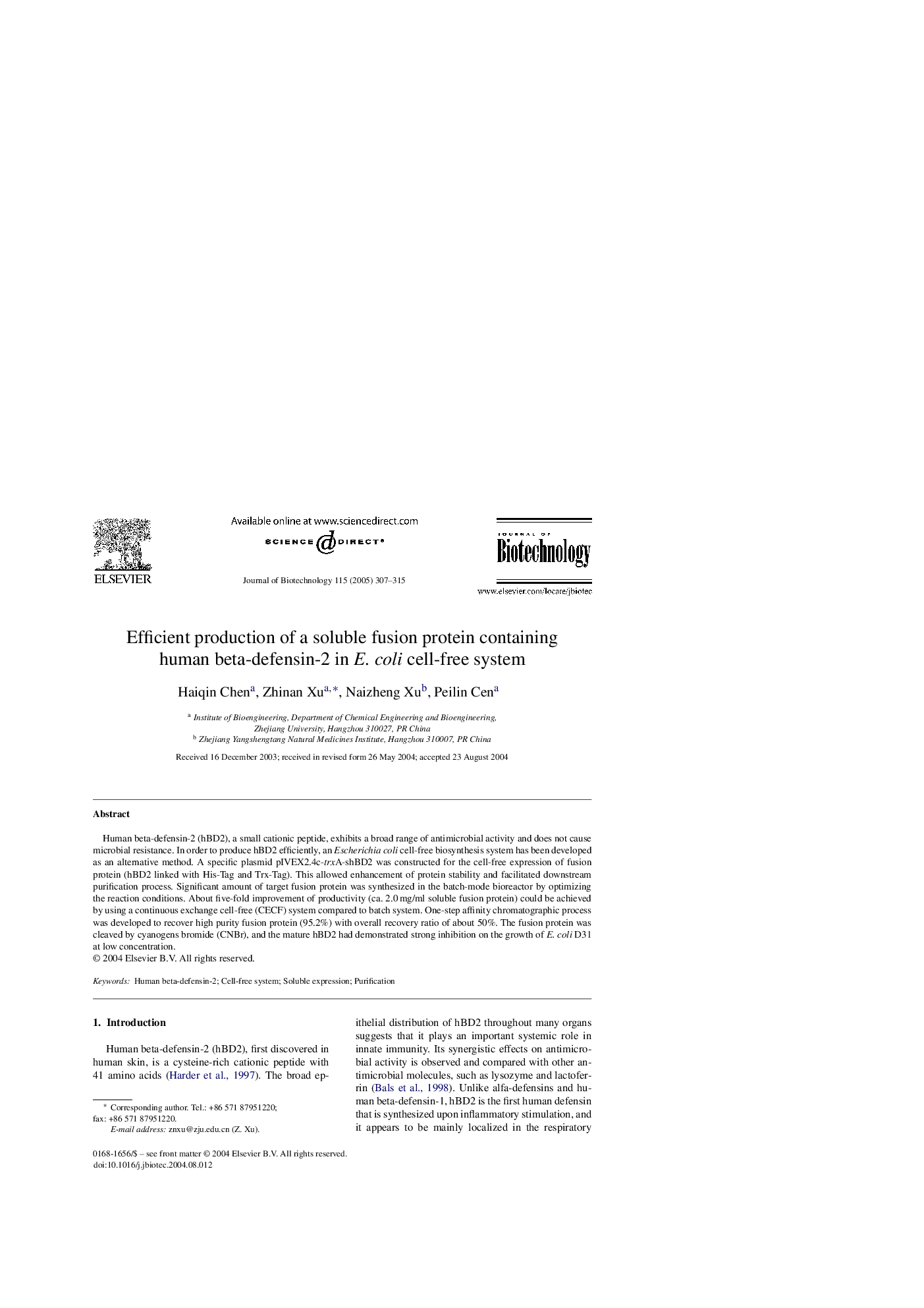| Article ID | Journal | Published Year | Pages | File Type |
|---|---|---|---|---|
| 9604482 | Journal of Biotechnology | 2005 | 9 Pages |
Abstract
Human beta-defensin-2 (hBD2), a small cationic peptide, exhibits a broad range of antimicrobial activity and does not cause microbial resistance. In order to produce hBD2 efficiently, an Escherichia coli cell-free biosynthesis system has been developed as an alternative method. A specific plasmid pIVEX2.4c-trxA-shBD2 was constructed for the cell-free expression of fusion protein (hBD2 linked with His-Tag and Trx-Tag). This allowed enhancement of protein stability and facilitated downstream purification process. Significant amount of target fusion protein was synthesized in the batch-mode bioreactor by optimizing the reaction conditions. About five-fold improvement of productivity (ca. 2.0Â mg/ml soluble fusion protein) could be achieved by using a continuous exchange cell-free (CECF) system compared to batch system. One-step affinity chromatographic process was developed to recover high purity fusion protein (95.2%) with overall recovery ratio of about 50%. The fusion protein was cleaved by cyanogens bromide (CNBr), and the mature hBD2 had demonstrated strong inhibition on the growth of E. coli D31 at low concentration.
Related Topics
Physical Sciences and Engineering
Chemical Engineering
Bioengineering
Authors
Haiqin Chen, Zhinan Xu, Naizheng Xu, Peilin Cen,
